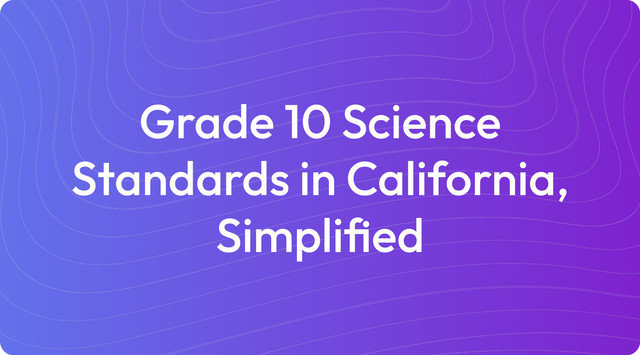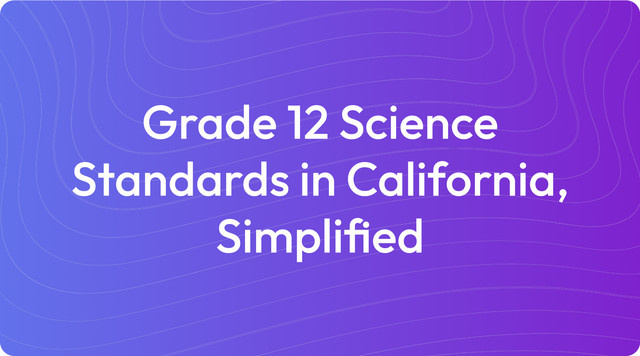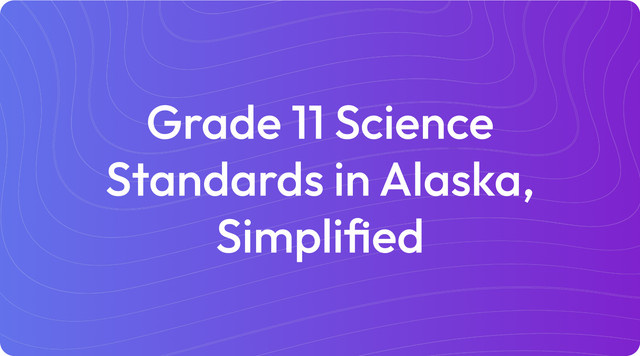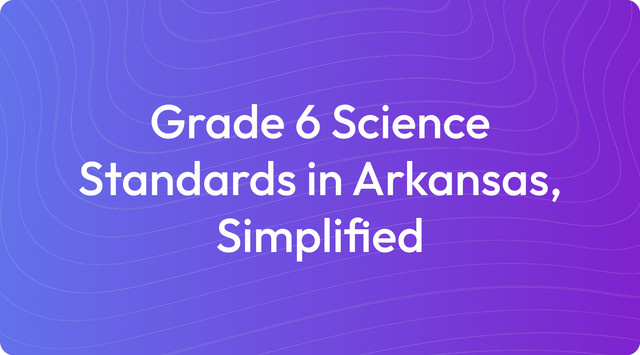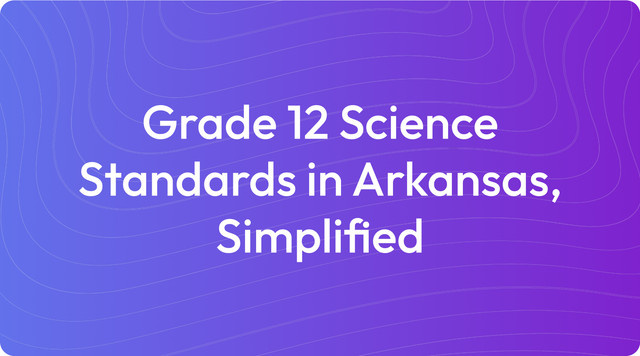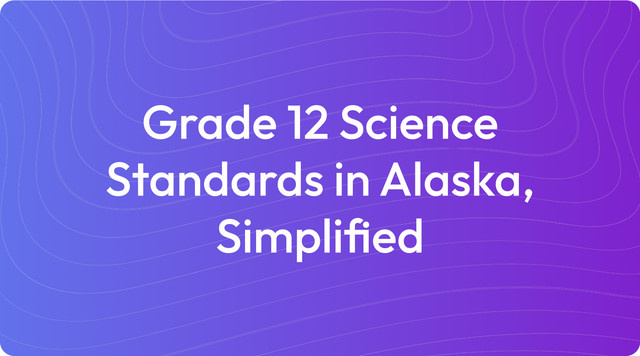Grade 1 Science Standards in Alabama, Simplified
Grade 1 science standards in Alabama introduce living things, senses, and simple changes. Discover easy standards—read more on TeachShare!
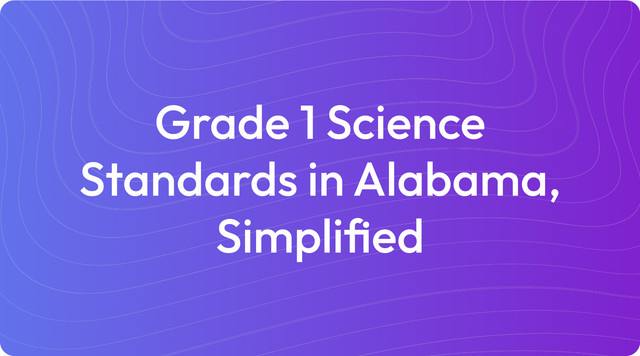
We understand that curriculum requirements are a significant part of your work. Education standards provide the foundation for what students learn, but interpreting them can be a challenge. Our goal is to offer clear information on these standards to support your instructional planning.
Think of education standards as learning goals that outline what students should know by the end of a grade. For you, they offer a clear framework for what to teach. For instance, Alabama's first-grade science standards guide teachers to cover topics like the needs of plants, properties of sound, and how to prepare for severe weather.
What Are Grade 1 Science Standards in Alabama?
The Grade 1 Science Standards in Alabama, based on the Alabama Course of Study: Science (2015), focus on foundational scientific concepts. These standards emphasize hands-on learning, observation, and exploration to build curiosity and understanding of the natural world.
Key Areas of Grade 1 Science Standards in Alabama
1. Life Science (LS): Plants and Animals
- Standard 1: Recognize the needs of plants and animals, including air, water, light, food, and shelter.
- Standard 2: Design and construct models that demonstrate how animals disperse seeds or pollinate plants.
- Standard 3: Observe and describe how plants and animals respond to seasonal changes.
2. Physical Science (PS): Properties of Matter and Sound
- Standard 4: Conduct experiments to classify objects by observable properties, such as size, shape, color, texture, and weight.
- Standard 5: Investigate the effects of different materials on the path of light and sound.
3. Earth and Space Science (ESS): Weather and Earth’s Resources
- Standard 6: Obtain and communicate information to describe the importance of weather forecasting to prepare for severe weather.
- Standard 7: Identify Earth’s natural resources and describe how they are used (e.g., water, soil, trees).
4. Engineering Design (ETS): Problem-Solving
- Standard 8: Define a problem and design a solution to protect something from weather (e.g., rain, wind).
Key Learning Goals for Grade 1 Science in Alabama
- Observation Skills: Students observe and describe patterns in the natural world, such as weather changes or animal behavior.
- Hands-On Exploration: Students engage in experiments and creative projects, like building models or classifying objects.
- Problem-Solving: Students learn to think like engineers by designing solutions to real-world challenges.
The framework for these standards is guided by the Alabama State Department of Education and principles outlined in the Next Generation Science Standards.
Key Tested Standards
To support your planning, it's helpful to know which standards are typically assessed. In Alabama, Grade 1 science assessments focus on foundational skills developed through hands-on activities and real-world scenarios. Here are the key tested standards, broken down by scientific discipline:
1. Life Science (LS): Plants and Animals
- Standard 1: Recognize the needs of plants and animals, including air, water, light, food, and shelter
- Why It’s Key: This standard helps students understand the basic requirements for survival and fosters critical thinking about how living things depend on their environment.
- Standard 2: Design and construct models that demonstrate how animals disperse seeds or pollinate plants
- Why It’s Key: This standard introduces students to the relationship between animals and plants and emphasizes problem-solving and creativity.
2. Physical Science (PS): Properties of Matter and Sound
- Standard 4: Conduct experiments to classify objects by observable properties, such as size, shape, color, texture, and weight
- Why It’s Key: This standard builds observation and classification skills, which are critical for understanding scientific properties.
- Standard 5: Investigate the effects of different materials on the path of light and sound
- Why It’s Key: Students explore cause-and-effect relationships while gaining foundational knowledge of light and sound, which sets the stage for future science concepts.
3. Earth and Space Science (ESS): Weather and Resources
- Standard 6: Obtain and communicate information to describe the importance of weather forecasting to prepare for severe weather
- Why It’s Key: This standard connects science to real-life safety and introduces students to the role of weather forecasting in protecting communities.
- Standard 7: Identify Earth’s natural resources and describe how they are used (e.g., water, soil, trees)
- Why It’s Key: This standard fosters environmental awareness and helps students understand how humans rely on Earth’s resources for survival.
4. Engineering Design (ETS): Problem-Solving
- Standard 8: Define a problem and design a solution to protect something from weather (e.g., rain, wind)
- Why It’s Key: This standard encourages critical thinking and engineering skills by challenging students to create solutions to real-world problems.
Why These Standards Are Key for Testing:
- Observation and Classification: Students identify patterns in the natural world and group objects based on properties.
- Model Building: Students create models to explain relationships, like animals dispersing seeds or weather protection.
- Real-World Applications: Students connect science to daily life by exploring how weather forecasting and natural resources impact their communities.
- Problem-Solving: Students think like engineers by defining problems and designing practical solutions.
The information on these standards is compiled from resources provided by the Alabama State Department of Education and the Next Generation Science Standards.
Example Learning Objectives for Unit Planning
Learning objectives translate broad standards into specific, measurable goals for your students, making it easier to design focused activities and assessments. They act as student-friendly "I can" statements that clarify what learners should be able to do by the end of a lesson. Here are examples for two Grade 1 Science standards, written to align with the three-dimensional learning approach of the NGSS and Alabama Course of Study:
Standard: Recognize the needs of plants and animals, including air, water, light, food, and shelter (Standard 1).
- I can list what plants and animals need to live, like air, water, and food.
- I can observe and describe how plants grow when they have sunlight and water.
- I can explain why animals need shelter to stay safe and healthy.
- I can compare what plants and animals need to see how they are the same and different.
Standard: Conduct experiments to classify objects by observable properties, such as size, shape, color, texture, and weight (Standard 4).
- I can use my senses to describe how objects look and feel, like smooth, rough, or heavy.
- I can group objects by their size, shape, color, or texture.
- I can explain why I grouped objects in a certain way based on their properties.
- I can sort objects into categories and share my findings with my classmates.
Key Changes & Updates
The foundation for Grade 1 science instruction remains the Alabama Course of Study: Science, which was established in 2015. For you, this means the core learning requirements have been stable, providing a reliable framework for long-term planning. This consistency allows you to build on and refine your existing instructional materials without needing to adapt to frequent curricular overhauls.
While the standards themselves are unchanged, the instructional approach has evolved. The current emphasis is on translating these standards into student-friendly learning objectives that promote hands-on engagement. For example, objectives for standards on seed dispersal (Standard 2) and weather preparedness (Standard 6) now focus on having students build models and explain concepts in their own words. This shift encourages a more interactive and practical application of scientific principles in your classroom.
Create with TeachShare
We understand that translating these standards into effective classroom materials is a demanding task. Our platform is built to support you, helping you create differentiated assignments, activities, and assessments that align directly with Alabama's science standards. This gives you more time to focus on what you do best: teaching your students. Start creating standards-aligned instructional resources with TeachShare now.
Frequently Asked Questions
What are the main topics covered in Grade 1 Science in Alabama?
In Alabama, the first-grade science curriculum is built around four key areas. These topics give students a foundational understanding of the world around them. The main topics covered are:
- Life Science: Exploring the needs of plants and animals, how they interact, and the effects of seasonal changes.
- Physical Science: Investigating the properties of matter, along with the basics of light and sound.
- Earth and Space Science: Learning about weather patterns, forecasting, and the use of natural resources.
- Engineering Design: Applying scientific knowledge to design solutions for simple problems, like protecting objects from weather.
What makes the Alabama science standards different from previous standards?
The 2015 Alabama Course of Study for Science introduced a more interactive and practical approach to learning. The key differences include:
- A focus on hands-on learning: Students are encouraged to learn by doing, through experiments, investigations, and building models.
- Connection to real-world applications: Lessons are designed to be relevant to students' daily lives, from understanding weather reports to knowing how plants grow.
- Development of critical thinking: The standards prompt students to ask questions, make observations, and solve problems.
What are examples of activities aligned to Grade 1 standards?
To bring these standards to life in the classroom, you can use a variety of engaging activities. Here are a few examples:
- Modeling Seed Dispersal: Students can use craft materials to show how animals help spread seeds.
- Sorting and Classifying: A simple activity where students group objects based on properties like size, texture, or shape.
- Keeping Weather Journals: First graders can track daily weather conditions to understand patterns and the purpose of forecasts.
- Building Shelters: A fun engineering challenge where students design and test small structures to protect an object from simulated wind or rain.
How do these standards connect to real-world applications?
A major goal of these standards is to help students see science in their everyday lives. The concepts they learn in the classroom have direct connections to the world outside. For instance, students begin to understand:
- The relationships between plants and animals in their own backyards
- Why listening to a weather forecast is important for staying safe
- How we use natural resources like water and wood in our homes and communities
- A basic process for solving problems by designing, building, and testing their ideas
How are students assessed in Grade 1 Science?
Assessment in first-grade science is less about traditional tests and more about observing what students can do. You can gauge their understanding through a variety of methods, such as:
- Hands-on investigations: Observing students as they conduct experiments, like classifying objects or testing a design.
- Models and projects: Evaluating the models students create, such as a representation of seed dispersal or a small shelter.
- Data collection: Reviewing the information students gather, like their weather journals or observations of plant growth.
- Discussions and explanations: Listening to how students explain scientific ideas, like why forecasting is useful or how animals help plants.
Answer


